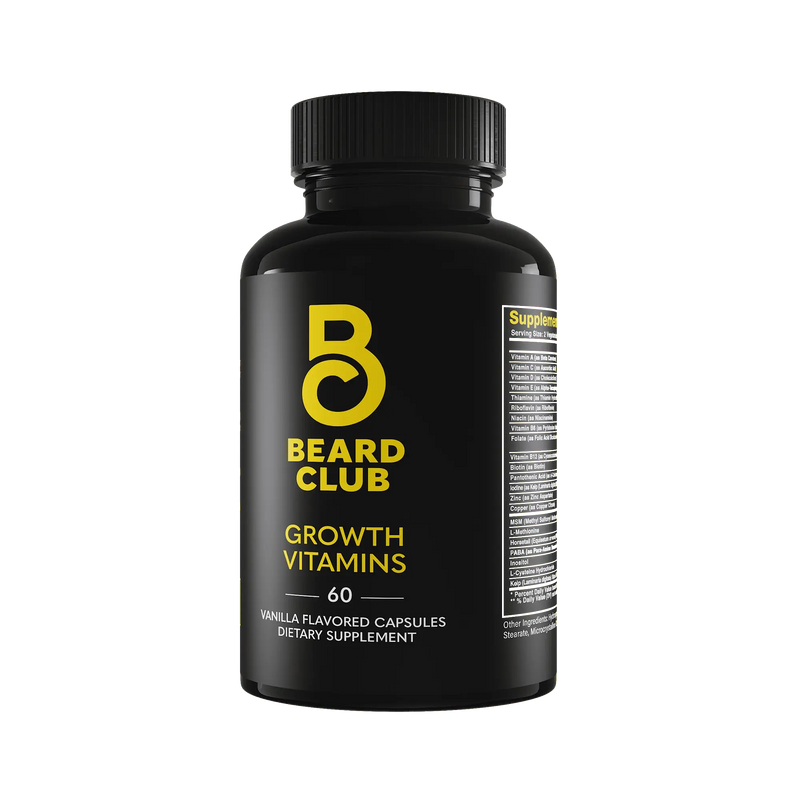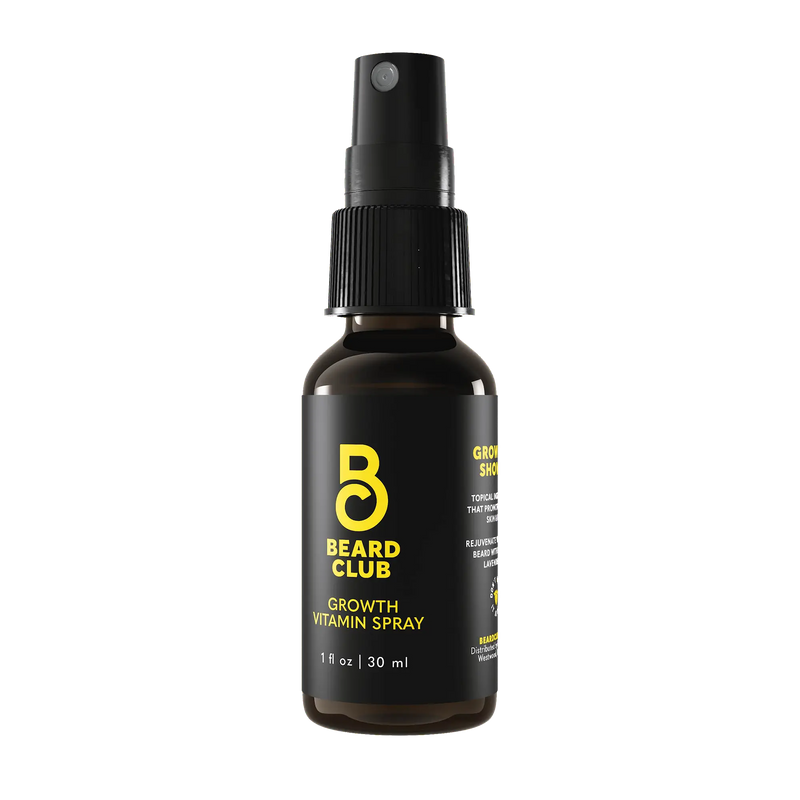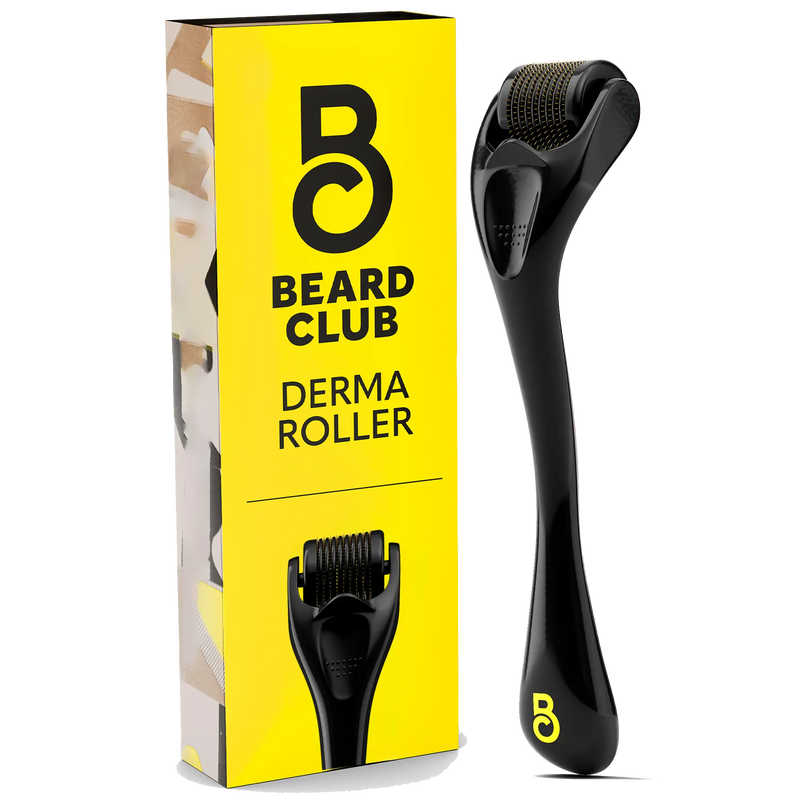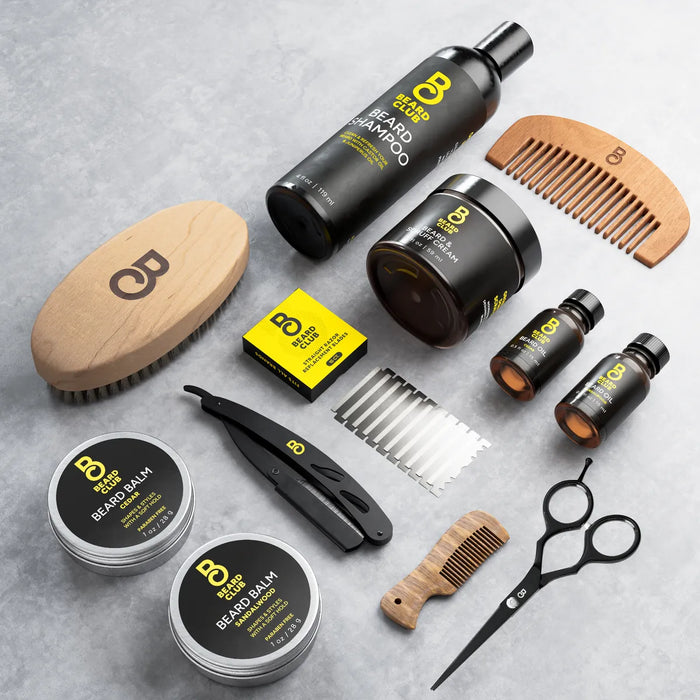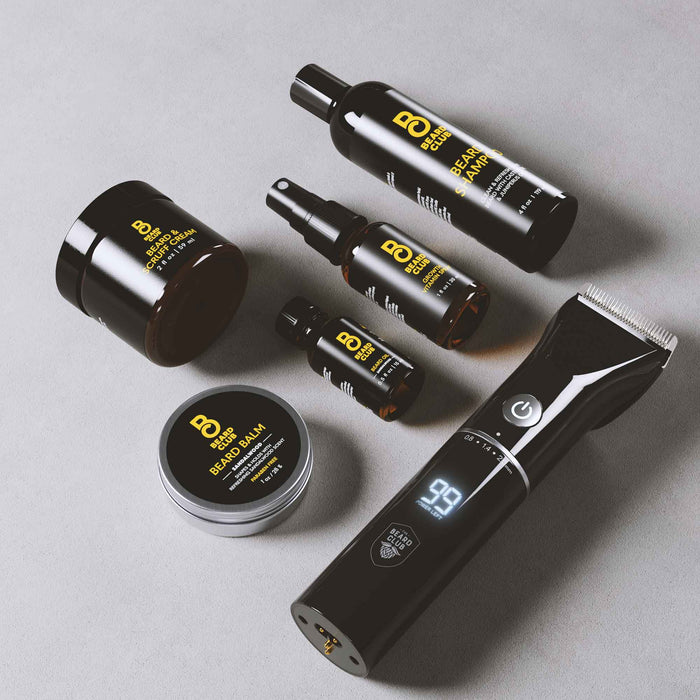How To Tame Your Beard: 8 Tips for Out-of-Control Beards
It seems like men are constantly searching for that perfect beard. Long, fluffy, and well-kept while still framing the face, it can be tough to tame a beard when it starts to get completely out of control.
If your beast of a beard just can’t be caged, we’ve got some simple tips and tricks to help you look your best. Here’s everything you need to know.
What To Do When a Beard Gets Out of Control
You can feel the difference between a healthy beard and a crazy one. If you’re ready to scratch the itch of a scraggly beard, here’s where to start.
1. Decide What Kind of Beard You Want
Here’s the thing, an “out of control” beard means something different to everyone, depending on what type of beard you want to have in the first place. If you want more of a stubble look with short hair, you’ll naturally want to keep your haircut to a quarter inch or less to accentuate the jaw. Or, if you want a full beard, you’ll want to know how to cut it to keep it uniform.
The way you take some of these tips is dependent on the type of beard you want, so be sure to figure out your personal style before getting ready with those razors. There are plenty of beard types that might dictate how exactly you need to trim your beard.
Curly beards, wiry beards, short beards, long beards, scraggly beards, bushy beards, afro beards, and everything in between. Some of these styles might not need to be kept up with in the same way as more professional, polished looks. So a lot might be subjective.
With that said, there are a few mainstays that can apply to pretty much every situation.
2. Uniform Doesn’t Mean the Same
If you have a large beard that’s curly, wavy, or anything in between, know that your hair shouldn’t be the same length at every point on your face. The hair on your sideburns should be shorter than the hair on your jaw.
Cut the hair on your sideburns shorter and slowly fade it down to the chin. Under the chin is where you can allow the length to go as far as you want. This helps to shape your face instead of making it look more rounded. Such a look is generally rocked by those with longer, more narrow faces.
3. Keep Your Beard Clean
When a beard gets out of control, you can feel it. It starts to itch like crazy, and you might even start to think about wanting to shave the entire thing off. But try your best to stick it out — it might just be a bit dirty.
Cleansing your beard several times a week, in addition to washing your face, can help to remove oil build-up and grime. Plus, it enhances shine and prevents breakouts that might lead to irritation and itch.
Cleaning a beard lets you take a look at it in its natural state so you can more easily find those flyaways and stragglers to trim off. This will help reduce the appearance of beard bedhead that you might find yourself struggling with after waking up in the morning.
4. Comb and Brush It Out
If you have long hair on the top of your head, you wouldn’t leave the house without giving it a brush. So why would you do the same with your beard? Your beard should be detangled with a comb or beard pick, and then brushed and manicured just like the hair at the top of your noggin.
But you can’t use any plastic brush or comb. The best type of brush is a boar's hair wooden beard brush which can distribute oils and balms throughout your beard while also ensuring your curly or wavy locks don’t get caught in the spokes.
When brushing, be sure to brush downwards and let the bristles slip through your hair without pulling. Some pieces of hair might get dislodged from the force, but don’t worry; it’s all good. We recommend brushing before bed.
5. Define the Line
Your beard can start to look unruly if you let it devour your entire neck. As a rule of thumb, you want to shave a line slightly above the Adam’s apple and work outwards towards your jawline. This helps to accentuate the jawline a little bit more and makes you look like you know what you’re doing.
Then, be sure to use a razor to completely shave off the tiny hairs below this line. It can look a tad messy if you have some stubble down there, so check that there are no distractions from your beautiful new beard.
6. Away With the Flyaways
After you give your beard a careful brush, if you notice hairs that stick out from the shape of your perfect beard, take a pair of beard-trimming scissors to snip them off. You should do the same on your mustache — if there are any hairs that fold over your lips, it is time for them to go.
7. Train Your Beard
Like with your new dog, you can train your beard. Unlike your dog, you can get your beard to act exactly how you want it to.
Rubbing your beard with a comb or a brush will help your beard hair grow in a downward direction rather than growing outward. Combine this with sculpting clay, and you can keep a beard looking precisely as you want.
8. Practice Patience
One of the most important rules of growing out a beard and making it look as you want is to practice patience. It’s going to take some time for the hair on your chin to lay the way you want it to.
Like with any sport, it’s going to take some practice to get to a point where you’re able to trim your beard without much effort. Still, the growing pains are always worth it in the end when you can look like the best version of you.
What Products Should You Use for Your Beard?

Another great way to tame your beard is to take care of it like you would any other part of your body. Quality beards need to be cleaned, but they need to be moisturized and oiled up.
Here are some top-notch products to have in your arsenal:
Beard Balm
A beard balm is sort of like a pomade for the hair under your chin. It shapes, styles, and holds any type of beard while also leaving it feeling soft, healthy, and groomed to perfection. This can help you make your beard exactly how you want it to look, regardless of a few stray flyaways and stragglers. Want an extra boost of support? Try beard growth balm with added biotin for healthier, thicker beard growth.
Beard Oil
Every man with a large, medium, or even a small beard can benefit from some oil. This conditions and hydrates your beard to help soothe itchiness and make it feel soft and supple. Plus, these are scented, so you can ditch the smell of that tuna salad you ate for lunch in place of some soothing sandalwood beard oil instead.
Beard Shampoo
You should clean your beard in the same way you clean your hair, and using some shampoo is the best way to wash it out to keep it free of dandruff. Beard shampoo can detangle stragglers while refreshing your beard to its fullest extent.
Vitamin Spray
If you’re looking to grow out your beard to a point where it can’t be tamed, vitamin spray is a great go-to. Our unique blend of vitamin D, lavender, and peppermint can hydrate and nourish your beard with essential nutrients to promote growth and eliminate patchiness.
Don’t know where to begin? Our trimmer starter kit has every single one of these products coupled with a PT45 trimmer to give you all the tools you need to tame the wildest beards in the game. Get your PT45 trimmer today and join the club.
Welcome to the Club
Wild beards can be more difficult to tame than wild animals. But there are some simple tips and tricks to help fix them, like keeping your beard clean, giving them a regular trim, using quality beard products, and brushing your beard to help train your hair to lay however you want it to.
If you don’t even know where to start when it comes to ruling the unruly, The Beard Club has your back (and your chin). From starter kits to standalone products, we’ve got everything you need to keep your beard looking in top shape.
Take the beard quiz today and take 15% off your first order.

Sources:
A Short History of Beard Styles | History Cooperative
Tips for healthy hair | American Academy of Dermatology
Best Vitamins & Supplements for Hair Growth | Cleveland Clinic


